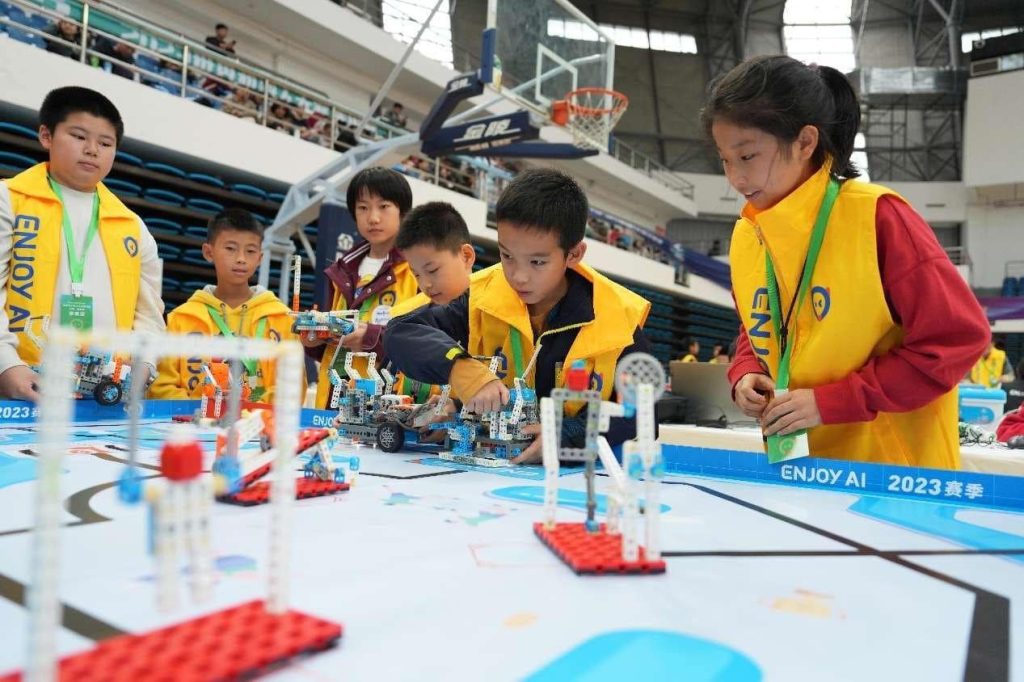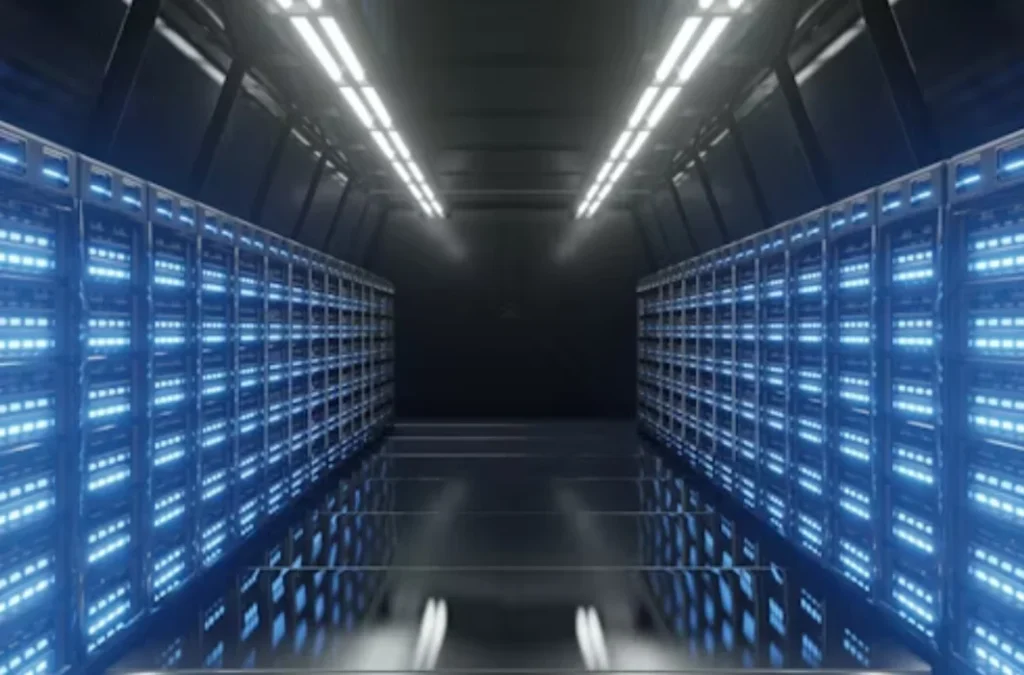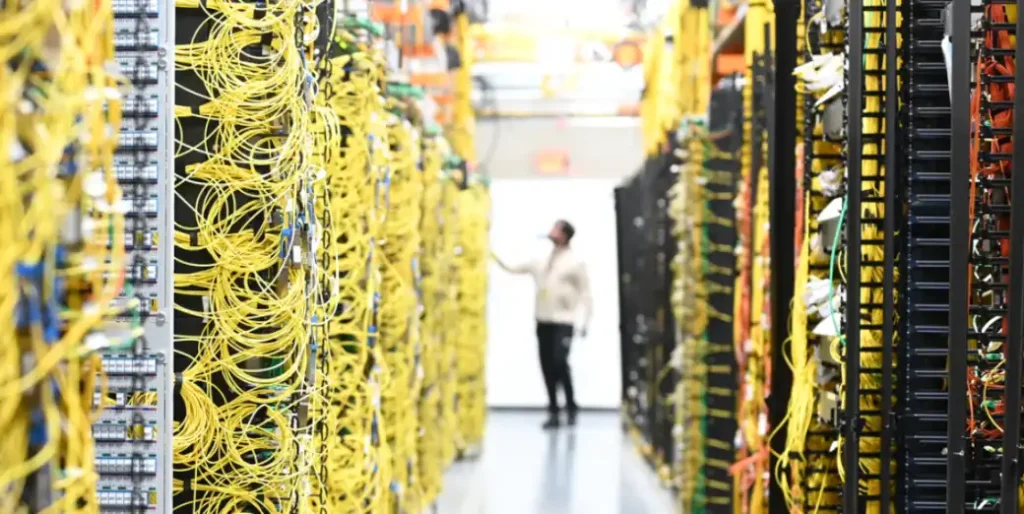Beginning September 1, 2025, China will make artificial intelligence (AI) education a compulsory part of the curriculum in both primary and secondary schools. Under this policy, students will be required to complete at least eight hours of AI-focused instruction per academic year. The content will be age-appropriate and either embedded into existing subjects or offered as standalone courses, depending on the school’s curriculum structure.
Building a Foundation for AI Leadership
This decision marks a significant step in China’s long-term strategy to become a dominant global force in artificial intelligence. By introducing students to AI concepts from an early age, the Chinese government aims to foster a new generation of innovators and specialists equipped with the skills necessary to thrive in an increasingly tech-driven world.
Education Minister Huai Jinpeng emphasized the importance of early AI education during a recent public address. He noted that AI is “reshaping all aspects of society” and stressed the need for foundational training that will prepare students to understand, apply, and eventually innovate within this transformative field. As part of this broader initiative, Huai also announced the upcoming release of a national white paper on AI education, which will provide further guidance on curriculum design, implementation strategies, and evaluation standards.
Age-Specific Curriculum Design
The AI curriculum will be tailored to the developmental stages of students. For younger children in primary school, lessons will likely focus on hands-on, interactive activities that introduce basic concepts of automation, pattern recognition, and logic. These foundational topics may be explored through visual programming tools, simple robotics kits, and gamified learning platforms that encourage exploration and experimentation.
In middle and high school, the curriculum will become progressively more sophisticated. Students will be introduced to machine learning, data processing, computer vision, natural language processing, and ethical considerations related to AI deployment. High schoolers may also be given opportunities to work on practical projects involving AI applications in real-world scenarios, such as smart home systems, autonomous vehicles, or AI-powered social apps.
A Global Trend Gaining Momentum
China’s decision aligns with a broader global movement to incorporate artificial intelligence into early education. In the United States, AI literacy initiatives are being piloted in several states, while Italy recently introduced policies to integrate AI modules into its high school science programs. These efforts underscore the growing consensus among education policymakers that early exposure to AI will be crucial for future workforce readiness.
However, China’s approach is notable for its scale and decisiveness. By mandating AI instruction nationwide and embedding it across all school levels, China is taking a more centralized and comprehensive route than many other countries. This aligns with the nation’s broader ambitions, as outlined in its national AI development plan, which aims for China to become the world leader in artificial intelligence by 2030.
Educational Infrastructure and Implementation
Implementing such a wide-reaching policy will require substantial investment in teacher training, curriculum development, and digital infrastructure. To that end, the Ministry of Education is expected to roll out a range of support measures, including the development of standardized textbooks, AI learning platforms, and training programs for educators.
Universities and vocational schools across the country may also be called upon to assist with the initiative by offering AI literacy courses for current teachers and creating pipelines for future educators specializing in technology instruction. Partnerships with major Chinese tech companies—such as Baidu, Tencent, and Alibaba—are likely, as these firms have both the expertise and vested interest in nurturing the country’s future AI talent.
Balancing Innovation with Ethical Awareness
In addition to technical skills, China’s AI curriculum is expected to include discussions around digital ethics, algorithmic bias, and data privacy. These lessons will help students understand not just how AI works, but also how it should be responsibly developed and used. Given the power and potential risks of artificial intelligence, equipping young learners with both knowledge and critical thinking skills will be essential.
Minister Huai noted that part of the white paper’s focus will be on guiding students through the ethical landscape of emerging technologies. He emphasized the need for a “people-centered approach” to AI development, ensuring that future AI professionals are not only skilled but also socially conscious.
Opportunities and Challenges Ahead
China’s initiative represents a bold and proactive effort to embed AI knowledge into the foundation of its national education system. If executed effectively, this policy could give Chinese students a competitive edge in the global technology landscape and support the country’s long-term innovation goals.
However, challenges remain. Ensuring consistency in curriculum quality across urban and rural schools, addressing gaps in teacher expertise, and maintaining the rapid pace of technological change within the classroom will require sustained effort and coordination. The integration of AI instruction also raises important questions about assessment standards and how to measure learning outcomes in such a dynamic and interdisciplinary field.
Conclusion
With its new mandate for AI education in schools, China is laying the groundwork for a tech-savvy generation that is well-prepared to contribute to the future of artificial intelligence. By making AI instruction compulsory across all grade levels, the country is taking a forward-thinking approach that prioritizes both innovation and inclusivity. As other nations watch and learn from this bold move, China may set a new global standard for how to equip students with the skills needed for the intelligent world of tomorrow.












